A First Look at Lake Nona
Chris Lewit
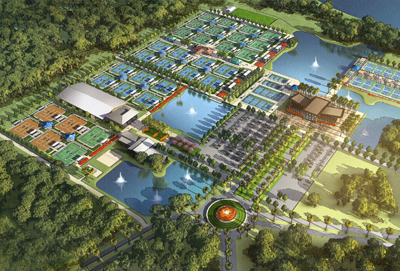
I recently had the good fortune of being invited by Jose Higueras to observe Player Development preseason training at the new Lake Nona, Florida USTA National Campus. It's one of my very favorite times of the year to study with the USTA national coaching team as they prepare the best American junior and professional players for the Australian Open and the beginning of the new year on tour.
I arrived in December on the first day the facility was opened to players and coaches, even before the scheduled January 2nd public opening. The campus was still undergoing some construction and it was exciting to see the new "Home of American Tennis" in its infancy, before the throngs of players would arrive to play on the 102 tennis courts at the facility.
Yes--102 courts! It's the largest single installation of tennis courts I have ever seen, sprawling over 40 plus acres, on a parcel adjacent to the Orlando airport. It was a very smart move by the USTA to situate themselves near a large international airport because ease of access by travel-weary professionals and the public is one of the most important aspects of the facility.
For example, for about $300, I can get a direct flight from New Jersey, where I live, to Orlando, and take a 10 minute taxi to the campus. Total travel time? About 3 hours door-to-door. That kind of access should make the facility popular for busy professional players who can use the facility as a training base and then easily jump on a flight to get to their next tournament.
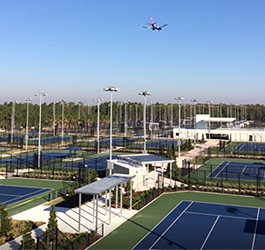
The USTA is also banking on the fact that the Orlando area is one of the most popular tourist destinations in the world, especially for families, and part of the calculus is that Lake Nona will become a destination for families for play, training, or tournaments along with a trip to nearby Disney or Universal Studios theme parks.
The only issue with the location is the planes overhead. Shades of the old U.S. Open! On balance it's probably a minor distraction in the context of the overall resources and quality of the facility.
Pride
Speaking with Player Development staff and coaches, their pride was palpable in finally getting a permanent, complete facility where they can train future American champions. Previously they had shared a facility at Evert Academy in Boca Raton, which was generally understood to be too small, with too little court access, and unfortunately, sometimes viewed as a kind of prison by the junior players living there.
Player Development now has its own dedicated area of the campus. This includes a battery of hard courts and imported red clay courts from Italy--and 6 indoor hard courts, a rarity in Florida.
There is a large state-of-the-art fitness room, a cafe, offices, and other training rooms. In addition, there is a dedicated player housing building, adjacent to their court battery. It will be very easy for them to bring in top players full-time or part-time, and give them comfortable accommodations onsite.
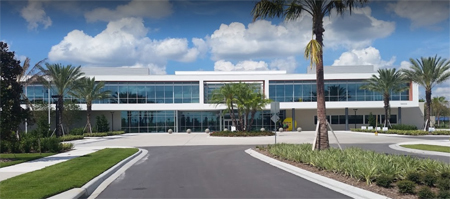
The Team
One of the important high performance goals of the campus is to bring together more top American pros and juniors together to support each other--part of the Team USA concept, the branding of which I think is brilliant. It's a sincere attempt to overcome the friction between the USTA, the players, their families, and many private developmental coaches who often felt excluded and that their players had been co-opted by Player Development.
As USTA Head of Coaching Education Paul Lubbers explained in his interview with John Yandell a few issues ago, this is the vision of Player Development Head Martin Blackman, who was both a tour player and a junior coach before coming over to the USTA. The players and players families are making more of the decisions and the USTA is supporting developmental plans ultimately devised by the players and the support team they choose for themselves. (Click Here.)
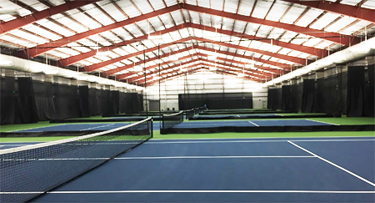
More
On the other side of the campus is the USTA Welcome Center which houses a check-in greeting and meeting area for the public and features dozens more courts, including two small stadiums, one of which is Har-Tru. Sandwiched in between these two complexes is a battery of 10-and-under courts, which are free for the public to book, and will also host junior tournaments in the smaller court formats. These courts are surfaced with sport court tiles.
A short walk away, past a pond with a fountain, is the College Tennis area, with 12 hard courts and impressive viewing pavilion, which can accommodate NCAA dual matches and host college tournaments. In addition the USPTA, the national teaching pro organization, has broken ground on a new world headquarters, moving from Houston.
The Welcome Center courts are open to the public and can be played by anyone for a small fee. USTA plans to host many junior and league tournaments here, and the court complex has been planned with shade stations and viewing areas scattered throughout the facility--including bathrooms and even ice machines!
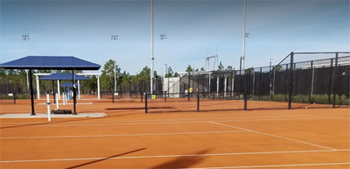
In addition, many of the courts for the public and also on the Player Development side, are Playsight equipped Smart Courts. These courts with multiple built in cameras give players a wide range of real time measurements and data for match play and practice, including ball speed, trajectories, line calling and target drill scores. (Click Here for more on Playsight.)
While I was there I saw young American juniors being mentored by older American players and former champions. I saw Robbie Ginepri working with Francis Tiafoe, Reilly Opelka, and Tommy Paul, three top young American pros. Jim Courier also stopped to observe.
On an adjacent court, Lindsay Davenport was working with Madison Keys. Nearby, players such as Irina Falconi, Louisa Chirico, and Christina McHale were training with younger American juniors in the Player Development program.
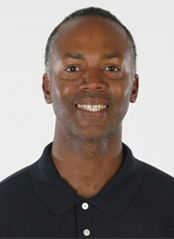
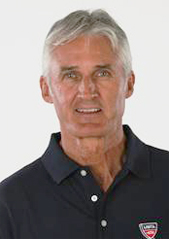
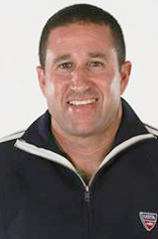
Driven by Blackman, this is the Team USA approach--as many American players as possible, current, former, and upcoming, working together toward success on the world tour.
Destination
Lake Nona is also potentially a major destination for all American tennis enthusiasts. Families can visit and book courts to play or schedule lessons. Adults will have a destination for league matches at the national level.
Junior players will be able to come play tournaments and also watch the best American pros practice. College players will have national events held there. The new National Campus has something for every tennis player in the country.
Under the supervision of Jose Higueras and Jay Berger, we can only be hopeful for a resurgence in American men's pro tennis. Under the guidance of Ola Malmqvist, the women have already arrived and are truly dominating the world stage. (Click Here to read Jose's work on Tennisplayer. Click Here to read Jay's.)
It's a big investment. Tens of millions of dollars. Will it pay off?
A facility itself obviously does not guarantee great players. Players can emerge from anywhere and it is their talent and effort and that of their coaches that ultimately matters. But Lake Nona is a symbol of the commitment of the USTA to facilitating the developmental process in a new way. The future will tell us more.
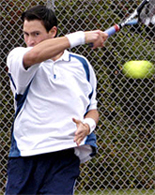
Chris Lewit, former #1 for Cornell and Pro Circuit player, has coached numerous top 10 nationally ranked juniors and is a leading coach, educator, and author. He has written two best-selling books, The Secrets of Spanish Tennis and The Tennis Technique Bible.
Chris runs a popular high performance summer tennis camp in the beautiful mountains of Vermont and coaches players world-wide through his virtual school, CLTA Online (CLTA.teachable.com).
Chris also produces a weekly high performance tennis video talk show and podcast, The Prodigy Maker Show, which is available on Apple Podcasts and all other podcasting directories. All shows can be accessed at ProdigyMaker.com.
Check out Chris's blog, also at ProdigyMaker.com for free articles on high performance junior development and Spanish training. Learn about his camp at ChrisLewit.com or visit the online academy at CLTA.teachable.com
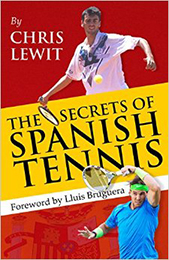
The Secrets of Spanish Tennis
What makes Spanish tennis so unique and successful? What exactly are those Spanish coaches doing so differently to develop superstars like Rafael Nadal and David Ferrer that other systems are not doing? These and other questions are answered in The Secrets of Spanish Tennis, the culmination of five years of study on the Spanish way of training by USTA High Performance Coach Chris Lewit.
|
Contact Tennisplayer directly: jyandell@tennisplayer.net
Copyright Tennisplayer 2018. All Rights Reserved.



